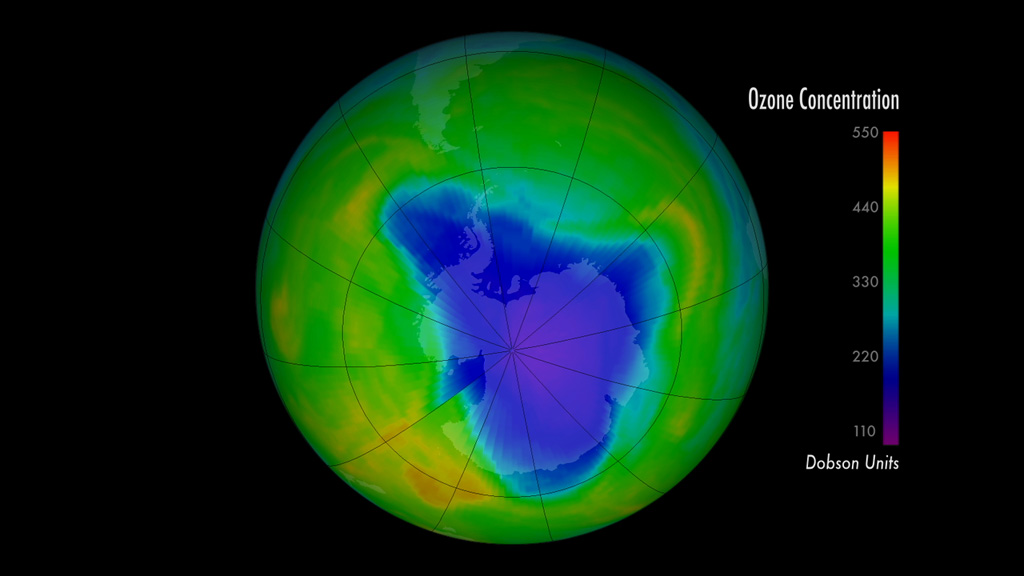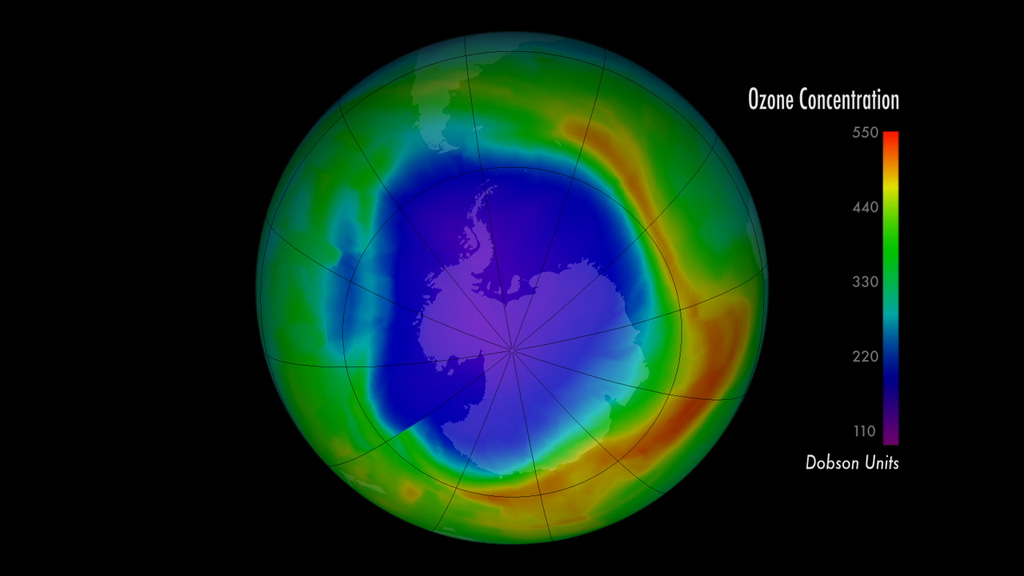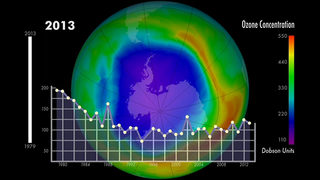Earth
ID: 11644

Ozone is a colorless gas mainly found in Earth’s stratosphere. It forms a protective layer that absorbs harmful ultraviolet light from the sun. In 1985, an extreme depletion of ozone over Antarctica was discovered—the so-called Antarctic ozone hole. It soon became clear that this drop in ozone was caused by man-made chemicals called chlorofluorocarbons (CFCs). To help solve the global depletion of ozone, the international community regulated CFC production and consumption by adopting the Montreal Protocol in 1987. Although this and subsequent actions have now effectively banned CFC production and put the ozone layer on a path to recovery, long-lived CFCs in the atmosphere continue to effect ozone levels to this day. Watch the video to see more than 30 years of changes in ozone concentrations over the Southern Hemisphere.



A Brief History of Ozone




Related Story
For More Information
Story Credits
Lead Visualizer/Animator:
Matthew R. Radcliff (USRA)
Video Editor:
Matthew R. Radcliff (USRA)
Producer:
Matthew R. Radcliff (USRA)
Lead Scientist:
Paul Newman (NASA/GSFC)
Project Support:
Aaron E. Lepsch (ADNET Systems, Inc.)
Lead Writer:
Kasha Patel (Wyle Information Systems)
Matthew R. Radcliff (USRA)
Video Editor:
Matthew R. Radcliff (USRA)
Producer:
Matthew R. Radcliff (USRA)
Lead Scientist:
Paul Newman (NASA/GSFC)
Project Support:
Aaron E. Lepsch (ADNET Systems, Inc.)
Lead Writer:
Kasha Patel (Wyle Information Systems)
Please give credit for this item to:
NASA's Goddard Space Flight Center
NASA's Goddard Space Flight Center
Short URL to share this page:
https://svs.gsfc.nasa.gov/11644
Keywords:
SVS >> App
NASA Science >> Earth
https://svs.gsfc.nasa.gov/11644
Keywords:
SVS >> App
NASA Science >> Earth








